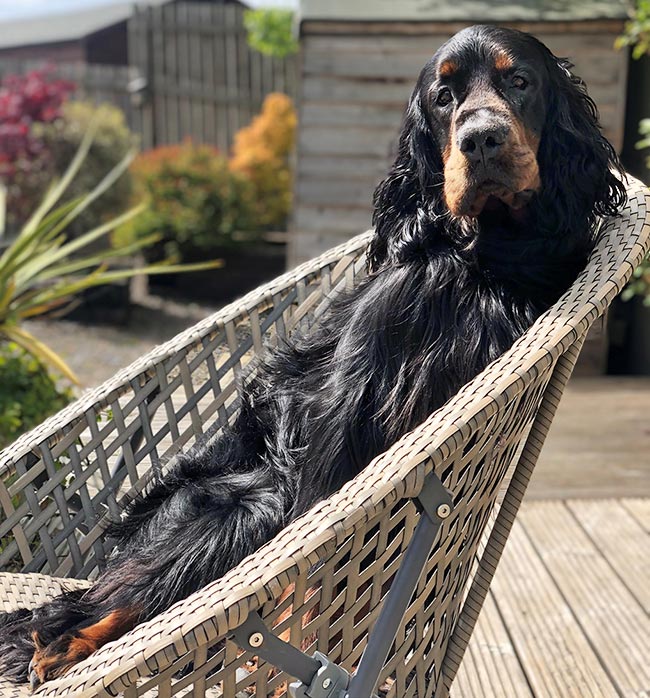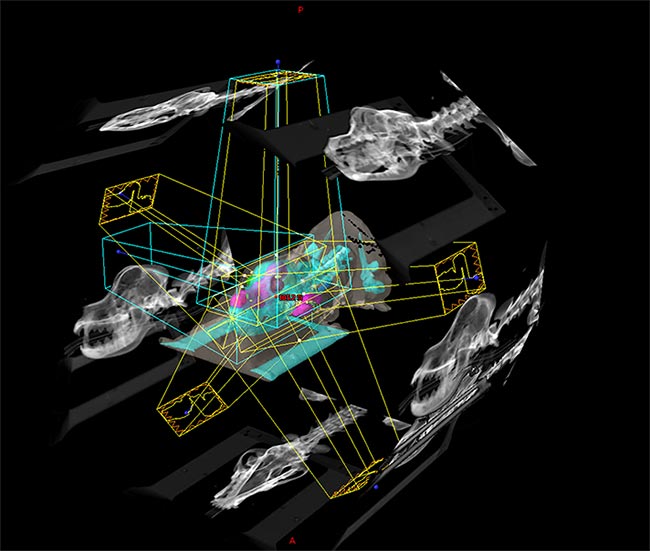28 Aug 2020
Team at The University of Edinburgh uses intensity modulated radiation therapy to treat aggressive nasal tumour in Gordon setter.


Vets who treated an aggressive cancer using a high‑tech radiotherapy technique for the first time in the UK now hope to repeat its use in “as many patients as possible”.
A team at The University of Edinburgh Royal (Dick) School of Veterinary Studies used intensity modulated radiation therapy (IMRT) in treating Ralph, a five-year-old Gordon setter referred with repeated nosebleeds and confirmed on tests as having a nasal growth.
Although IMRT is commonplace in human medicine, and has been used by vets in Europe and the US, Ralph was the first pet in the UK to be treated using the advanced technique.
Treatment was carried out using the VitalBeam linear accelerator based at The University of Edinburgh Hospital for Small Animals, with the team selecting IMRT because it can safely deliver precise radiation to tumours while minimising risk to surrounding health tissue.
Magdalena Parys, a radiation oncology specialist vet at the university, said: “We decided to treat Ralph with IMRT because this gave us a better opportunity to spare more healthy tissue surrounding the tumour.
“In comparison to conventional radiotherapy, we were able to deliver lower doses to his eyes, brain and oral cavity, which, in turn, resulted in minimal acute toxicity post‑radiation therapy.”

Dr Parys said IMRT was particularly useful in specific tumours, and she envisaged it being used widely again in the future.
She said: “IMRT is particularly useful for tumours that are complex in shape or have critical organs nearby, as we can modify beam shape, direction and intensity.
“IMRT technique gives us the ability to deliver higher doses to the tumour itself, with no increase in dose to the surrounding healthy tissues and, therefore, potentially decrease the number of treatments required.
“IMRT is a great technique, which we are aiming to use for as many patients as possible. It is, however, very case‑specific, and there are still patients where conventional techniques are just as good.”
Ralph’s tumour has shrunk considerably, his nosebleeds have stopped and he is living his full life again.